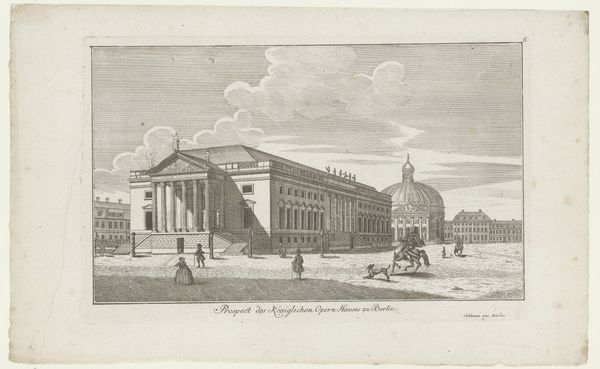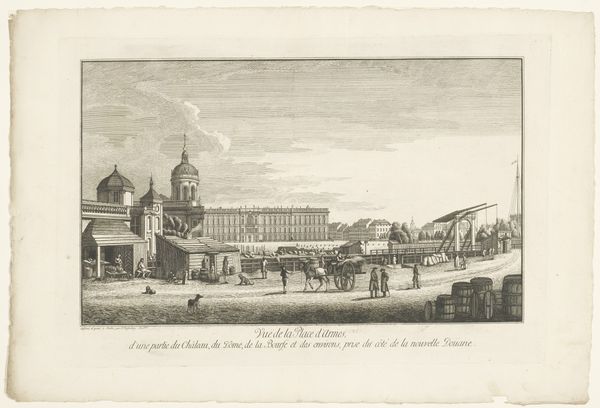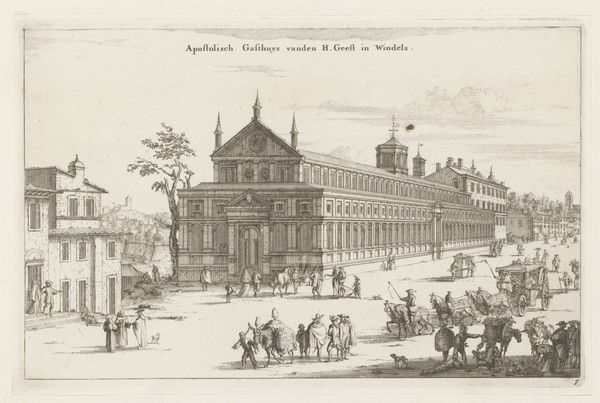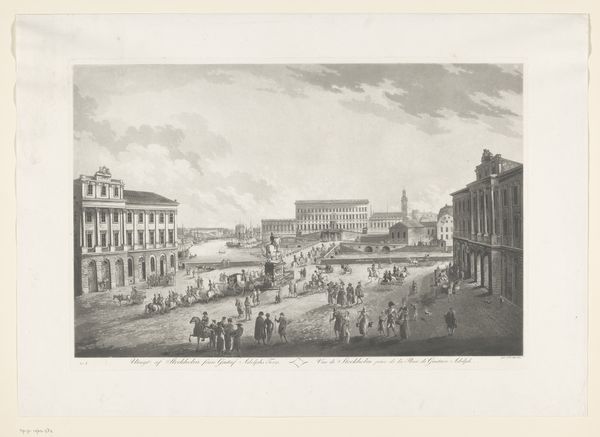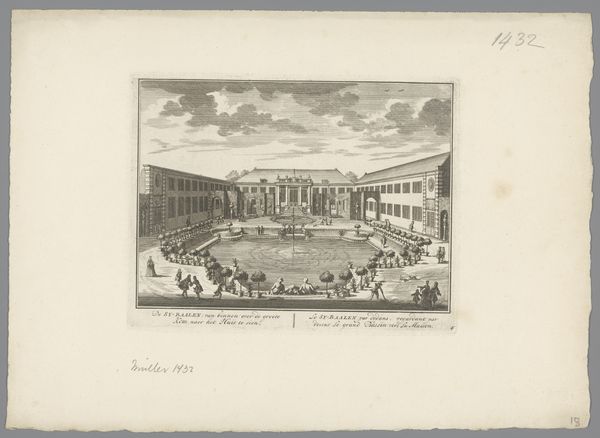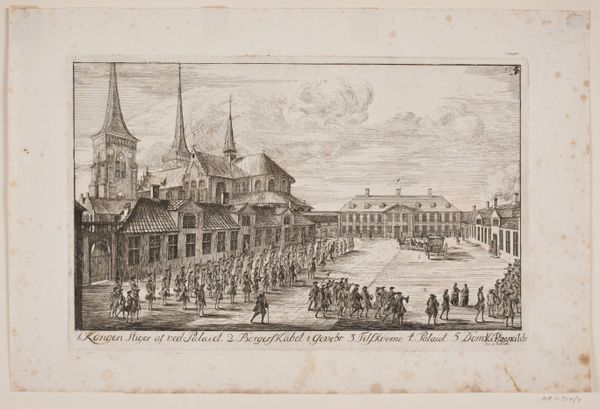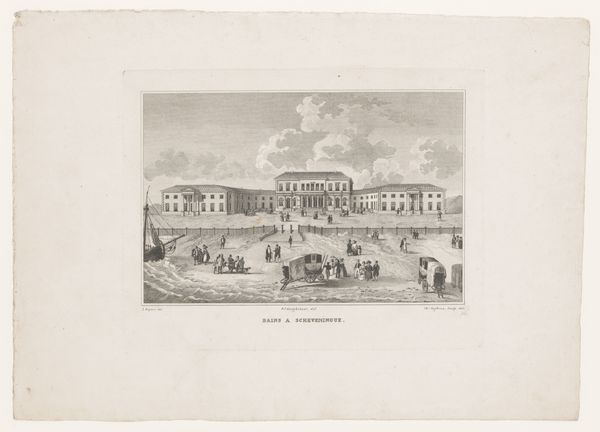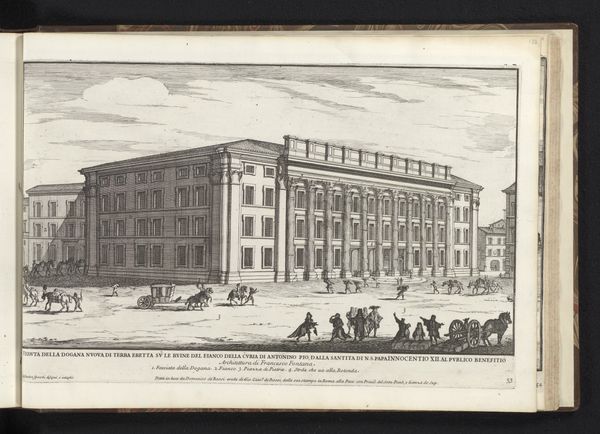
drawing, print, etching, engraving
#
drawing
#
baroque
# print
#
etching
#
landscape
#
etching
#
cityscape
#
engraving
Dimensions: 178 mm (height) x 265 mm (width) (bladmaal), 161 mm (height) x 248 mm (width) (plademaal), 143 mm (height) x 238 mm (width) (billedmaal)
Editor: So, here we have Bartholomaus Roque’s "Prinsens Palae," an etching from 1747, showing a bustling cityscape. I’m immediately struck by the formal elegance, but also how it captures everyday life. What stands out to you when you look at this work? Curator: The etching is fascinating as a form of early public relations. Roque presents the Prinsens Palæ not just as a building, but as a stage for civic life and royal power. Notice how the architectural precision intertwines with the animation of the figures. How does the print, in your view, serve the purpose of promoting a certain image of Copenhagen? Editor: Well, it certainly shows a vibrant and ordered society. The composition emphasizes the palace's grandeur, suggesting stability and prosperity under royal rule. I suppose it's meant to impress. Curator: Precisely. Consider the intended audience. This wasn't just about showing off a pretty building. It was about consolidating power, communicating an ideal. Etchings like this circulated widely; influencing opinions across social strata. Were such cityscapes used in other forms of media, perhaps to shape international perceptions? Editor: Probably! It seems like a form of propaganda, even though that word carries baggage today. So, these cityscapes were essentially early forms of media, helping shape opinions and reinforce the status quo. Curator: Exactly. The print then becomes more than just a pretty picture; it is a social artifact that participates in constructing power and national identity. Editor: That makes me see the etching with entirely new eyes. Thanks!
Comments
No comments
Be the first to comment and join the conversation on the ultimate creative platform.

